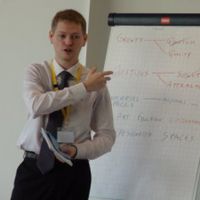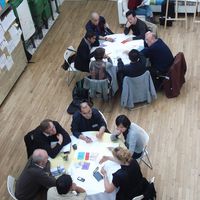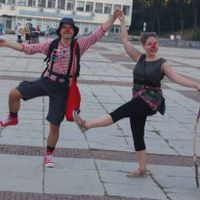Interview: Sacha Kagan of the Institute of Cultural Theory, Research and the Arts
 [caption id="attachment_5316" align="alignright" width="240" caption=""A sustainable creative city is one that includes a cultural perspective in all its policies,” explains Kagan"]
[caption id="attachment_5316" align="alignright" width="240" caption=""A sustainable creative city is one that includes a cultural perspective in all its policies,” explains Kagan"]The role of the artists and creative practitioners in the creation and sustenance of Sustainable, Creative Cities will serve as the focus of the Workshop on culture and the arts at ASEF’s 4th Connecting Civil Societies Conference (2-3 October 2010, Brussels) in preparation for the ASEM8 Summit (4-5 October 2010, Brussels).
Titled, Sustainable Creative Cities: The role of the arts in the globalized urban context, the Workshop will address the roles of artists and creative workers in the evolution of globalized cities across Asia and Europe, assessing how an “artistic mode of knowing” can contribute to a transition from creative cities to sustainable creative cities. Recommendations by participating artists and cultural practitioners will have relevance for ASEM policy and presented by ASEF at the ASEM8 Summit.
To understand the urgent need to foreground participative planning for sustainable creative cities in the ASEM policy agenda, ASEF spoke to Sacha Kagan, Research Associate and representative the European co-organiser of the Workshop, the Institute of Cultural Theory, Research and the Arts, Leuphana University (Lueneburg, Germany). Kagan is also the Founding Director of International Summer School of Arts and Sciences for Sustainability in Social Transformation (ASSiST), a project supported by ASEF through its Connect2Culture programme.
ASEF: Why did you bring this topic to the policy agenda?
Sacha Kagan: “Many cities in Europe and Asia (and elsewhere across the world) have, in the past few years, been striving to become ‘creative cities’ and to attract the so-called ‘creative class’. However, these policies are worsening the unsustainability of urban developments and raising critiques from local communities and from the creatives themselves.
On the other hand, the risk is high that disappointments about inadequate creative city policies would soon lead local governance bodies to neglect the potential roles of arts and culture for a qualitative sustainable development. Therefore, the time has come to shift the political priorities from unsustainable creative class policies, to sustainable creative city policies.”
ASEF: How is your work and that of the Institute of Cultural Theory, Research and the Arts, at Leuphana University connected to this issue?
Sacha Kagan: “Within the Institute of Cultural Theory, Research and the Arts (IKKK), Leuphana University Lueneburg, we are a research unit in the sociology of the arts and culture, led by the urban sociologist Volker Kirchberg. We are doing research both on the theme of creative cities and on the theme of sustainability and culture. (See also the self-presentation text on this webpage: Leuphana )
Personally, my central research focus is the shift, in the arts and more generally in European culture as a whole, to a mode of knowing reality (with a 'sensibility to patterns that connect') that may help find ways out of our unsustainable development path.
In parallel, I am also coordinating an international network of artists, scientists and other cultural actors engaged for 'cultures of sustainability': Cultura21 (www.cultura21.net). Cultura21 was also engaged in the Dialogue on Arts, Culture & Climate Change organized by ASEF in Beijing along the 7th ASEM Summit in 2008, and co-organized the international conference Culture|Futures in Copenhagen in December 2009 (alongside the UN climate conference).”
ASEF: How do you see civil society and governments could work together on this topic of creative sustainable cities?
Sacha Kagan: “The kind of policy-making that is called forward has to be bottom-up, participative, involving the local communities with different sectoral 'experts', including policy-makers and urban planners but also civil society organizations, artists and creative people, and others, e.g. craftspeople, elders, marginalized people. Participative and bottom-up are not just nice and formal words: they mean that the participants should work at eye-level with policy-makers.
Furthermore, a sustainable creative city is a city that founds its strength in its specific history, its cultural heritage, its cultural diversity and in its specific regional geographic context (both ecological and social context). Finally, a sustainable creative city is a city that includes a cultural perspective in all its policies (and not only in sectoral cultural policies).”
Policy-makers have to be aware of all this and to work together with civil society for creating the suitable pre-conditions for such bottom-up urban planning, giving communities and creative people the chance to transform the process of governance. Reaching that level of awareness requires a lot of advocacy work on the part of the civil society, including arts organizations.
Learn more about Sacha Kagan’s work at: Sacha Kagan
For more articles on culture360.org please refer to: ASEM 8 Summit: Civil society recommendations for sustainable cities
Similar content
posted on
27 Aug 2010
posted on
18 Nov 2010
posted on
11 Aug 2010
29 Mar 2012






